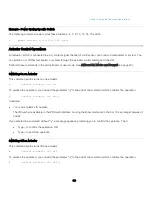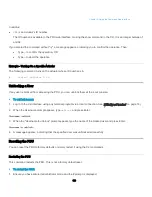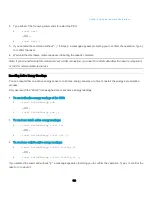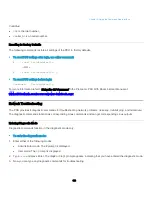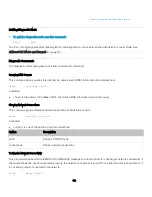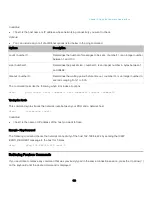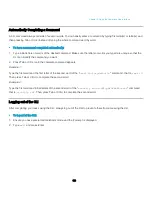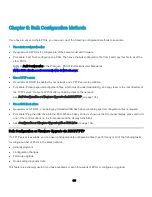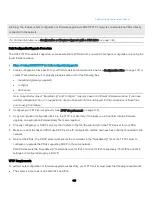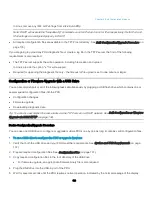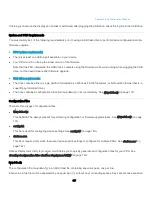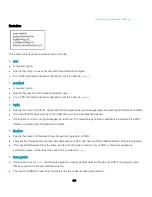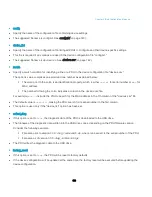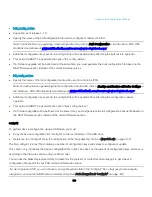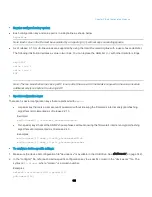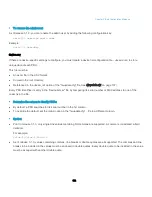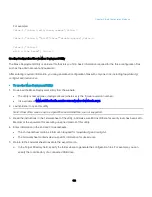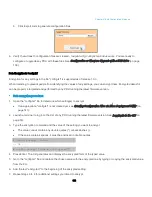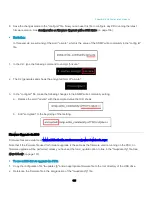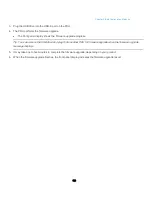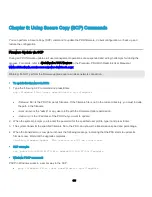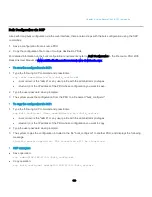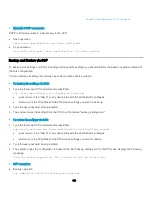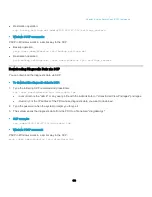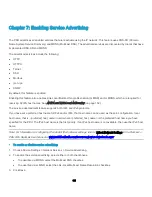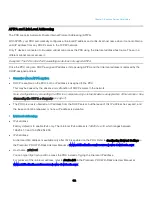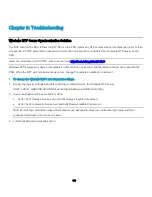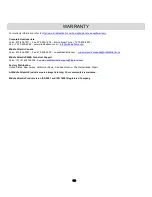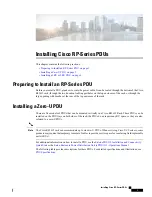
Chapter 5: Bulk Configuration Methods
141
Regular configuration key syntax:
•
Each configuration key and value pair is in a single line as shown below:
key=value
Note: Each value in the file must be separated by an equal sign (=), without any surrounding spaces.
•
As of release 3.1.0, multi-line values are supported by using the
Here Document Syntax
with a user-chosen delimiter.
The following illustration declares a value in two lines. You can replace the delimiter
EOF
with other delimiter strings.
key<<EOF
value line 1
value line 2
EOF
Note: The line break before the closing EOF is not part of the value. If a line break is required in the value, insert an
additional empty line before the closing EOF.
Special configuration keys:
There are 3 special configuration keys that are prefixed with
magic:
.
•
A special key that sets a user account's password without knowing the firmware's internal encryption/hashing
algorithms is implemented as of release 2.2.13.
Example:
magic:users[1].cleartext_password=joshua
•
Two special keys that set the SNMPv3 passphrases without knowing the firmware's internal encryption/hashing
algorithms are implemented as of release 2.4.0.
Examples:
magic:users[1].snmp_v3.auth_phrase=swordfish
magic:users[1].snmp_v3.priv_phrase=opensesame
To configure device-specific settings:
1.
Make sure the device list configuration file "devices.csv" is available in the USB drive. See
2.
In the "config.txt" file, refer each device-specific configuration key to a specific column in the "devices.csv" file. The
syntax is:
${column}
, where "column" is a column number.
Examples:
network.interfaces[eth0].ipaddr=${2}
pdu.name=${16}

